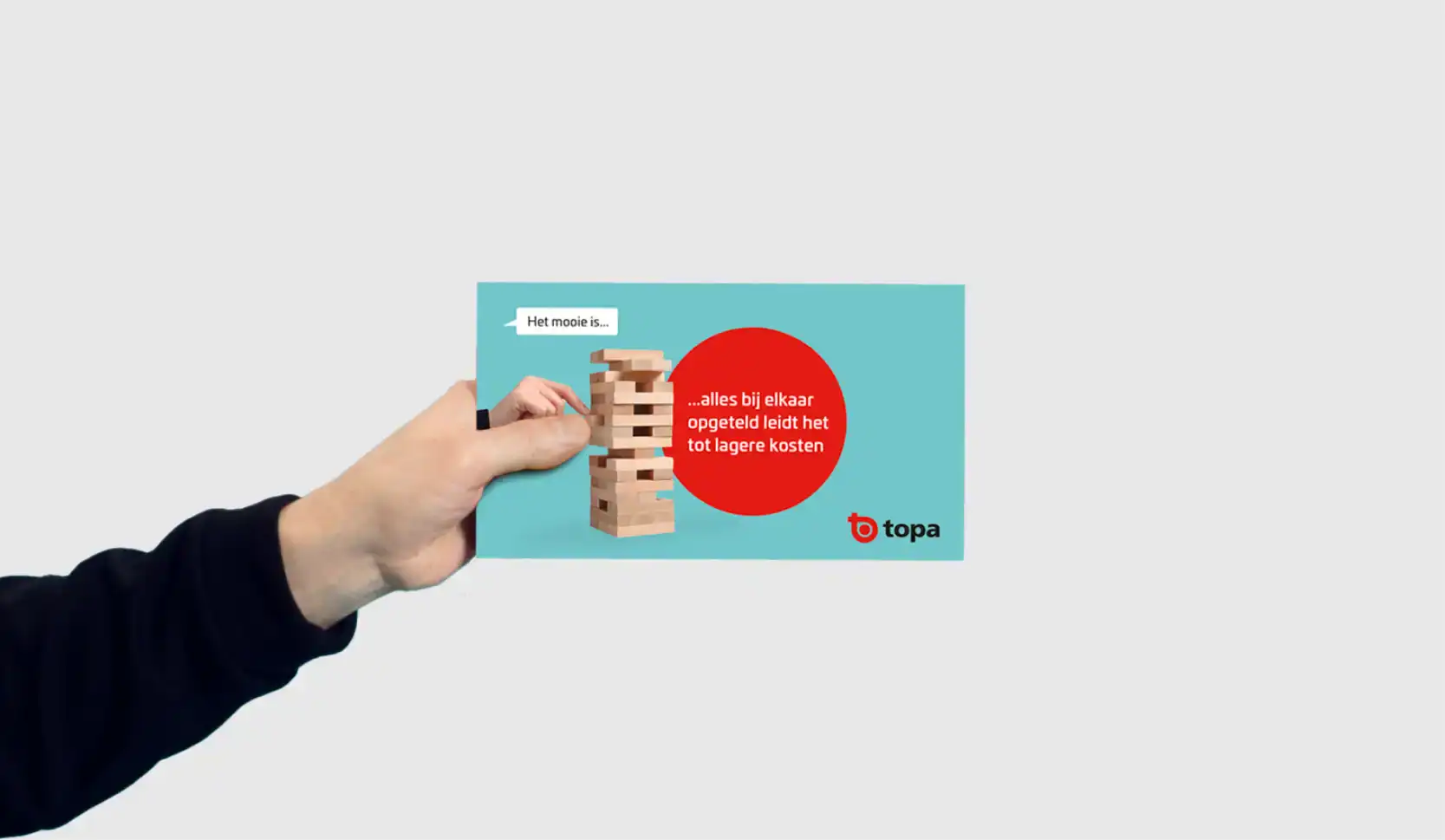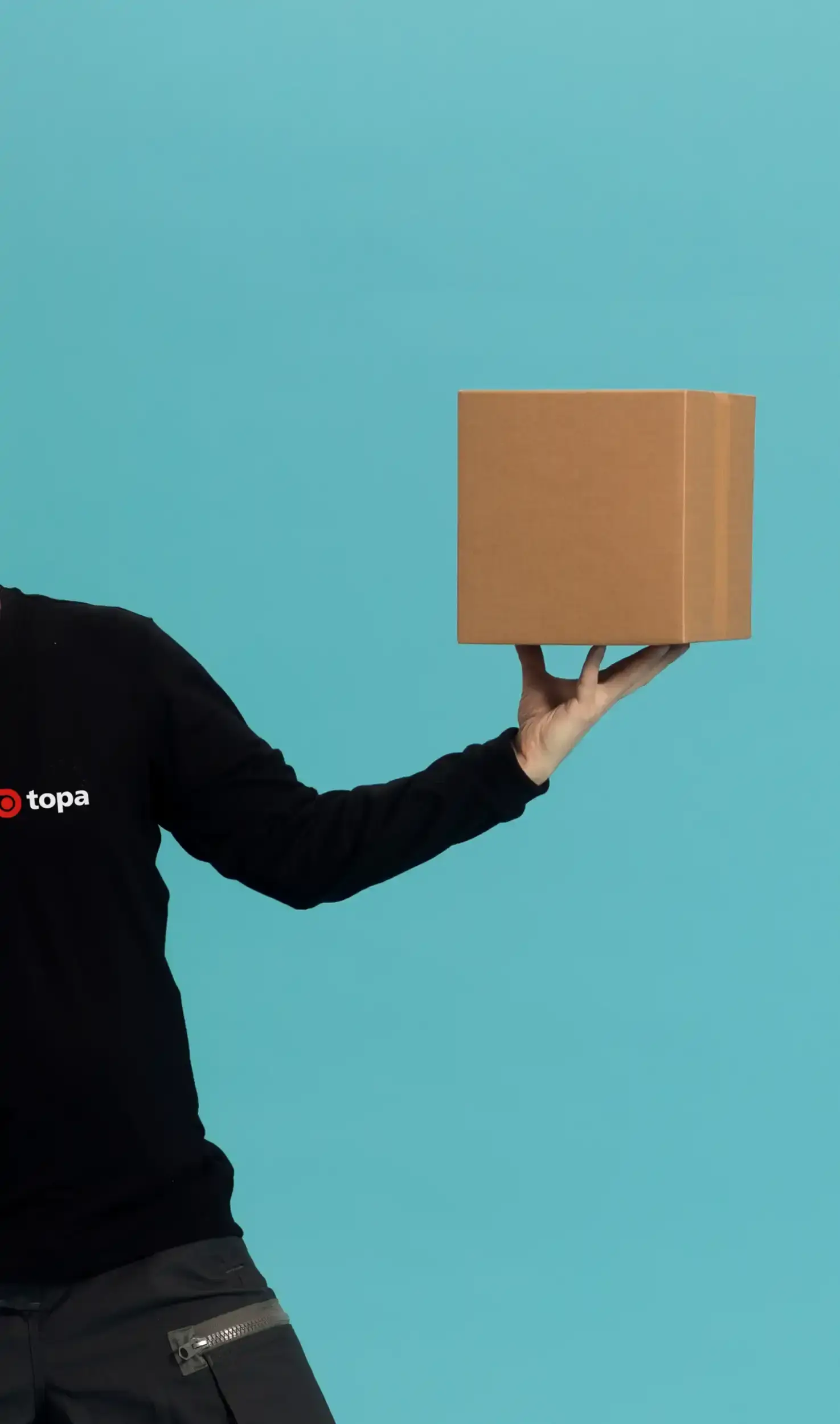Smart pallet stacking

Incorrect stacking is one of the most common causes of transport damage. Boxes that shift or collapse during transit often point to unstable stacking patterns.
Best practices for stable stacking:
- Column vs. interlocked patterns
Column stacking uses the strength of boxes vertically. Interlocked stacking improves lateral stability. A mix of both is often best. - Keep the centre of gravity low
Heavy boxes should always go on the bottom to prevent tipping. - Avoid overhang
Boxes that stick out reduce stability by up to 30% and are more likely to get damaged. - Use layer pads
Placing cardboard or anti-slip sheets between layers increases friction, improves grip and helps distribute weight more evenly.
Our specialists analyse your pallet loads and optimise every step of the process. Less damage, less waste, lower cost; that’s our promise.
Read the full article on which type of smart pallet stacking to use.
Want tailored advice? Call +31 252 245 200 or email info@topa.nl.
Less damage
Proper stacking, safe pallet height and tested packaging ensure stability and protect your products during transport.
Less material
Using the right film and machine settings can reduce film usage by up to 50%. Smart stabilisation techniques eliminate the need for excess materials.
Lower CO₂ emissions
Using less film and avoiding overpackaging directly reduces your carbon footprint. Every optimisation makes a difference.
Lower costs
Fewer damaged goods mean fewer returns, less rework, and lower packaging costs. Smart packaging pays off across the entire supply chain.


